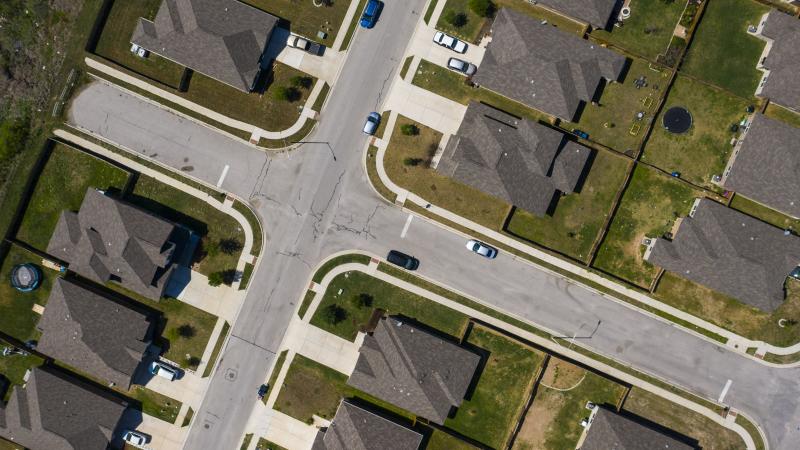Census, Fed data on minorities challenge critical race theory narratives of white suppression
Black wealth rose significantly over the last ten years, while neighborhood segregation declined, data shows.
Minorities have increased their mobility and financial standing over the last decade, according to federal data that challenges some of the narratives of the so-called Critical Race Theory spreading through schools and media.
While the Federal Reserve reports that “the typical white family has eight times the wealth of the typical black family and five times the wealth of the typical Hispanic family” it also acknowledges that African-American and Hispanic families have made significant gains.
While income inequality exists among racial and ethnic groups, the Brookings Institute points out in several reports that black and Hispanic households have made statistically significant economic progress especially in the years prior to pandemic-related shutdowns in 2020.
An analysis by the Federal Reserve, for instance, found wealth for African Americans and Hispanic Americans grew far faster during the Trump years than for whites.
Between 2016 and 2019, median wealth rose for all race and ethnicity groups, the Fed report states, but growth rates during this period “were faster for Black and Hispanic families.” Wealth increased for Black families by 33 percent and for Hispanic families by 65 percent during this period, compared to white families, whose wealth only increased by three percent.
The Federal Reserve defines wealth as the difference between families' gross assets and their liabilities and describes patterns related to median and mean incomes.
And while minorities still have a higher rate of poverty, their poverty rate reached record lows in 2019, according to Census data. The Black poverty rate of 18.8 percent was the lowest it has been since 1959 when poverty estimates were first recorded for this group.
In 2019, the poverty rate for Hispanics, 15.7 percent, was also the lowest on record since data for this group was first recorded in 1972. The poverty rate for Asians was also the lowest on record of 7.3 percent. The poverty rate of 7.3 percent for non-Hispanic Whites in 2019 was the same as the poverty rate of 7.3 percent in 1973.
The dream of reaching middle class and suburbia also substantially improved in recent years.
African Americans now make up 12 percent of the middle class and 13 percent of the population. To put that in perspective, 84 percent of the middle class in 1979 was white, nine percent was Black, five percent Hispanic, and two percent “other.”
By 2019, whites had fallen to 59 percent of the middle class, while 12 percent was Black, 18 percent was Hispanic, and 10 percent was listed as “other.”
Another Brookings analysis found that Black household median incomes also increased. In 2018 Black household median income was $41,511 compared to a 2007 pre-recession peak of $41,134. Income increases in this group were also geographically widespread. Among the 50 metropolitan areas with the largest black populations, 18 saw a statistically significant increase in black median household income between 2013 and 2018.
Census data also indicates that the real median income among African Americans grew by 7.9 percent in 2019, outpacing 2018’s income growth of 2.6 percent and 2017’s income decline of 2.4 percent. Black median income growth in 2019 under former President Donald Trump surpassed income growth rates under previous administrations.
Ken Blackwell, a former mayor, state treasurer and Ohio Secretary of State, told Just The News that black families want public safety, quality education and the ability to work and be self-sufficient.
“That's what most black folks in this country want, because that's what most Americans want. They're not locked into this battle of ethnicity, ethnic groups or racial groups. They want to be part of an opportunity society," he said. "And when you see leaders, political leaders in our cities, choosing not to make our cities fields of dreams, but because they are talking about defunding the police. They're talking about racial and ethnic division. They're turning our cities into killing fields not fields with dreams, and people are going to start pushing back against that.”
Raynard Jackson, founder of Black Americans for a Better Future, who has been working with black entrepreneurs nationwide, told Just The News, that at his events hundreds of young black, Asian, and Hispanic individuals are looking for business opportunities, not government handouts. “We need to get more of these corporate executive to talk about business opportunities within Boeing, Lockheed Martin, Booz Allen SAIC” to attract a younger generation, he said. “We just want to be treated like a part of the team. And we're looking for opportunity to expand our businesses.”
He also said blacks in his network are vehemently opposed to so-called Critical Race Theory. “We're vehemently against this whole notion that you're going to tell a five-year-old black kid that his classmate and a five-year-old white kid is superior to you strictly because of the color of his skin when he came out of his mother's womb. That's crazy. You're poisoning the mind of pure, innocent kids and black parents, specifically, are vehemently against it. I cannot tell you the level of hostility they have to that notion.”
According to a RedFin survey that analyzed U.S. Census data and its own housing market data, Redfin found that people of color accounted for 28 percent of suburban populations nationwide in 2018, an increase of nearly two percent from 2010.
The biggest increase in suburban areas analyzed was in Las Vegas, where people of color accounted for 40.2 percent of its suburban population in 2018, up from 30.5 percent in 2010, the report found. Salt Lake City and Seattle suburbs saw the next largest increases.
Suburbs of major cities nationwide also increased in ethnic diversity, including outside of Atlanta, Birmingham, Cincinnati, Dallas, Indianapolis, Kansas City, Pittsburgh, Philadelphia and Phoenix.
One factor contributing to an increase in people of color moving to suburbs is the cost of living in cities became prohibitive, Redfin notes.
Redfin chief economist Daryl Fairweather notes “there’s an important distinction between suburbs close to cities and those farther away. When Americans who are priced out of big cities move for more affordable housing, they tend to settle in nearby suburbs where they can still enjoy urban amenities.
“As many big coastal cities have grown too expensive for most Americans, people are spilling out into areas further away from city centers in search of affordable housing, resulting in more dense and more diverse suburban neighborhoods. The sprawl has changed some suburbs from bedroom communities into mini cities, with walkable restaurants and shops, and it’s changed the way we think about suburbs. Living near the center of a city is no longer so important, especially with the surge in remote work since the pandemic began.”
Another trend noted by the Census Bureau in its 2013-2017 American Community Survey five-year estimates, found that segregation by race and ethnicity had also declined since 2000.
Among 51 metro areas analyzed, 45 metro areas saw a decline among black-white segregation since 2000. While the majority saw reductions of only 1 to 4 percent, 16 areas saw declines of 5 percent or more.
Detroit saw the greatest decline of nearly 12 percentage points, followed by the metro areas of Kansas City, Indianapolis, Cincinnati, Chicago, Buffalo, Cleveland, and Minneapolis in the Midwest region. In Southern and Western metro areas, noticeable drops in segregation were found in Tampa, Louisville, Orlando, Houston, Memphis, Atlanta, New Orleans, and Miami. Segregation by race declined even though in some of these areas black populations increased both in metro and suburban areas.
In the largest 100 metro areas analyzed, Blacks accounted for 52 percent of neighborhood populations in 2000 compared to 45 percent from 2013-2017.
















